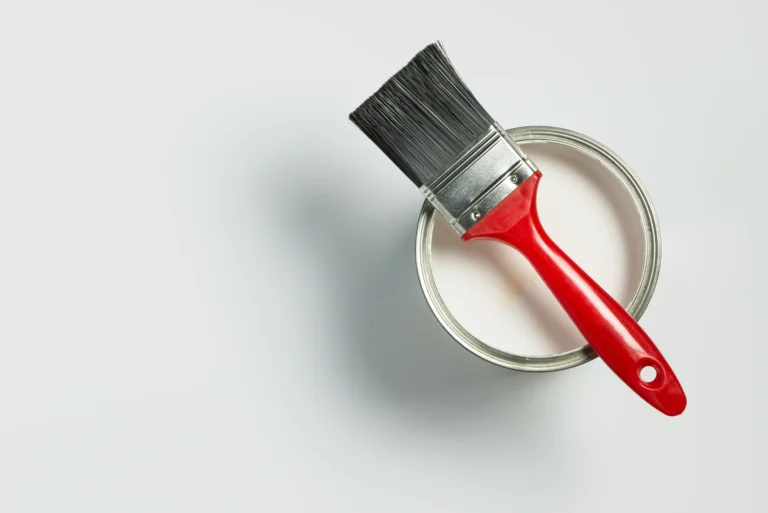Painting kitchen cabinets is one of the most effective ways to refresh your kitchen without a full remodel. But what if you could achieve a smooth, professional-looking finish without sanding? Many homeowners want to skip the dust and effort that sanding requires, and with the right products and preparation, it’s absolutely possible. Learning how to paint kitchen cabinets without sanding involves using specialized cleaners, bonding primers, and the correct paint types to ensure that the new coating adheres properly and lasts for years.
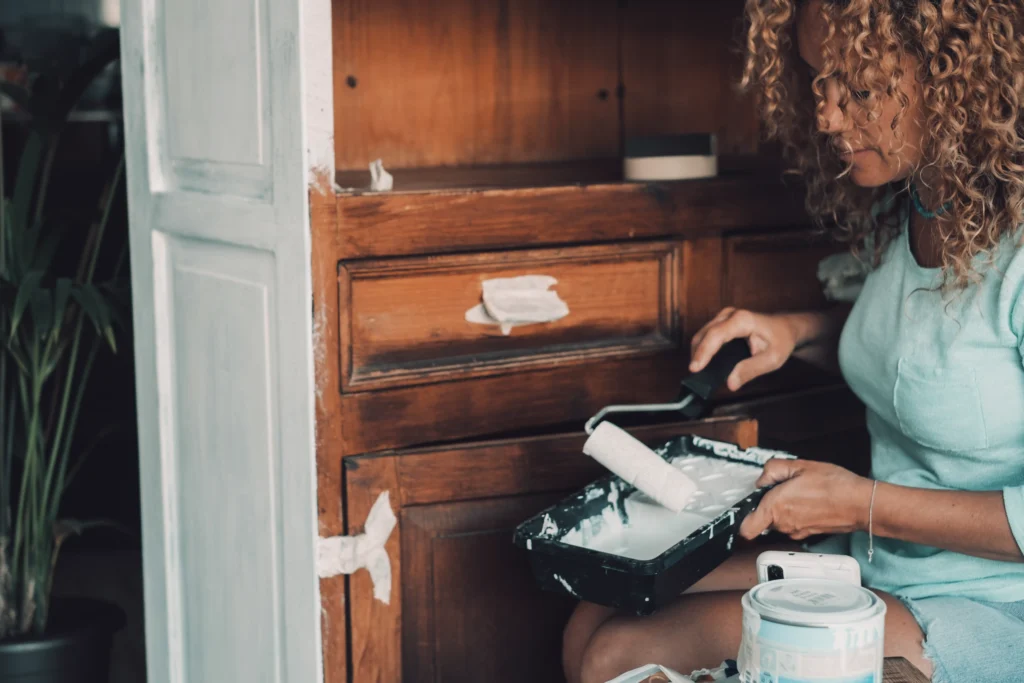
Can you really skip sanding?
Sanding has traditionally been considered essential because it removes the glossy topcoat from cabinets, allowing paint to grip the surface. However, new paint technologies and advanced primers have changed the process. With proper cleaning and the use of a strong bonding primer, you can skip sanding while still achieving durable, professional results. The key lies in removing every trace of grease and using a primer specifically designed to stick to slick or glossy surfaces. Professional painters like Four Seasons Painting Co. use these updated methods to save time while maintaining quality. Their expertise ensures that paint adheres seamlessly, even without the traditional sanding process.
Step 1: Clean and degrease thoroughly
Before painting, cabinets must be spotless. Kitchens accumulate grease, oil, and grime that prevent paint from adhering properly. Start by wiping down every surface using a heavy-duty cleaner or degreaser. Focus on handles, edges, and corners where residue builds up the most. After cleaning, rinse with warm water and let everything dry completely. This step replaces the need for sanding by removing the barrier that would otherwise prevent the paint from bonding. Many professionals use a solution like trisodium phosphate (TSP) or a TSP substitute for deep cleaning. It cuts through grease without damaging the wood. Proper cleaning is the foundation of a paint job that lasts.
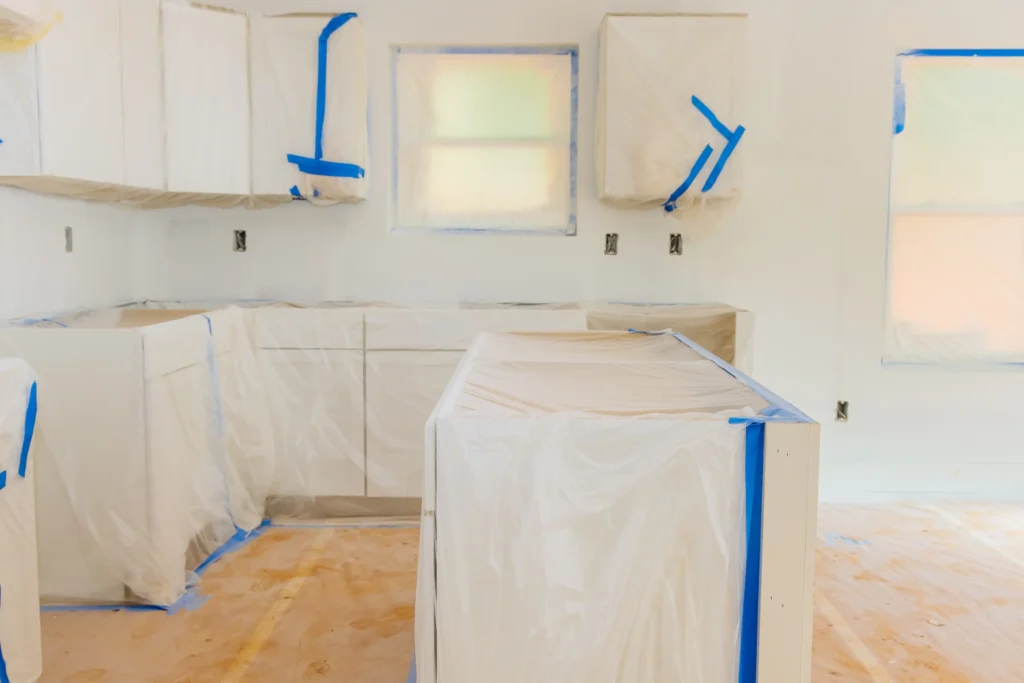
Step 2: Remove doors, drawers, and hardware
Just as with traditional cabinet painting, take time to remove doors, drawers, and hardware before starting. Label each piece with painter’s tape so you can reassemble them easily later. Painting around handles or hinges can lead to uneven coverage and messy edges. Removing all components allows you to apply smooth, even coats and ensures that every corner gets properly painted. While the cabinets are off, inspect them for damage or peeling areas. Lightly scuffing with a sanding sponge on chipped spots is acceptable even if you’re avoiding full sanding, it helps smooth repairs without creating dust throughout the kitchen.
Step 3: Use a deglosser or liquid sandpaper
Instead of sanding, professionals often use a deglosser, also called liquid sandpaper, to dull glossy finishes. This product chemically etches the surface so primer and paint can adhere better. Apply it using a clean cloth, rubbing evenly across all cabinet surfaces. Deglossers work quickly, so make sure to follow product instructions carefully. Once the surface is treated, allow it to dry completely before priming. This simple step mimics the effect of sanding without the mess or labor.
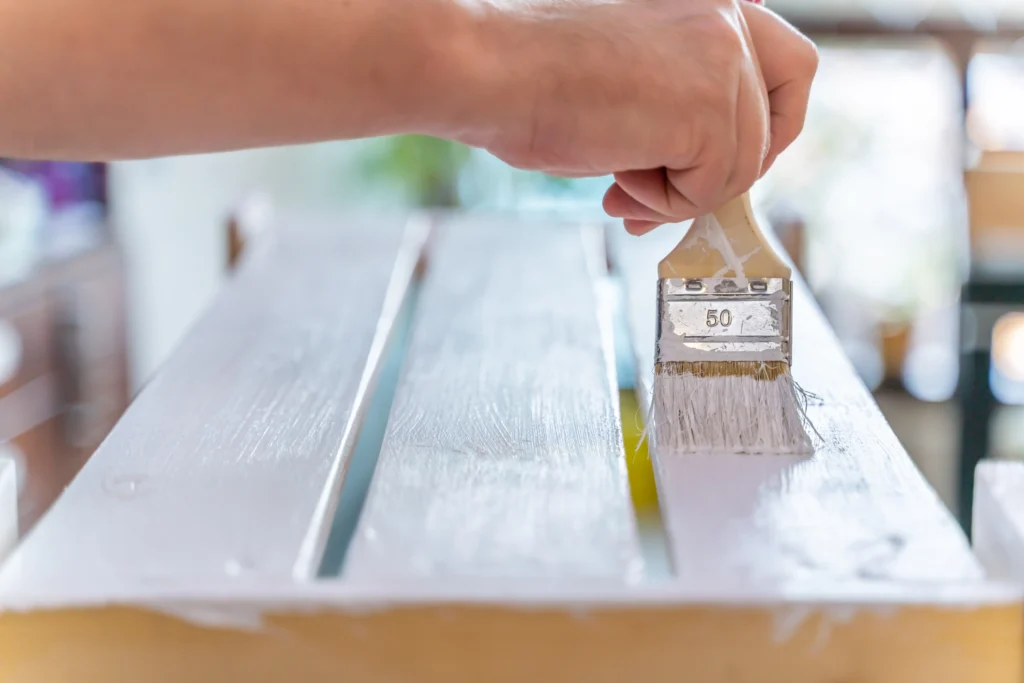
Step 4: Apply a bonding primer
The most important step in painting kitchen cabinets without sanding is choosing the right primer. A bonding or adhesion primer is formulated to stick to smooth, previously finished surfaces. It helps the paint grip firmly and prevents peeling or chipping later. Apply the primer evenly using a high-quality brush, roller, or paint sprayer. One coat is usually sufficient, but heavily finished or dark cabinets may benefit from two coats. Trusted options include Sherwin-Williams Extreme Bond Primer and Zinsser Bulls Eye 1-2-3, both of which are designed specifically for painting over glossy or laminate surfaces. Let the primer dry according to the manufacturer’s instructions before applying paint.
Step 5: Choose the right paint
Selecting the right paint is essential for achieving a professional result. Use high-quality enamel paint designed for cabinets and trim. Acrylic urethane and waterborne alkyd paints are the best options because they dry hard and resist moisture, scratches, and stains. These paints also level well, which minimizes visible brush strokes and provides a smooth, factory-like finish. Satin or semi-gloss sheens are ideal since they’re durable and easy to clean without being overly shiny. Professionals often recommend premium products like Benjamin Moore Advance or Sherwin-Williams Emerald Urethane Enamel, both known for their durability and smooth finish. Investing in high-quality paint ensures that your cabinets withstand daily kitchen use for years to come.
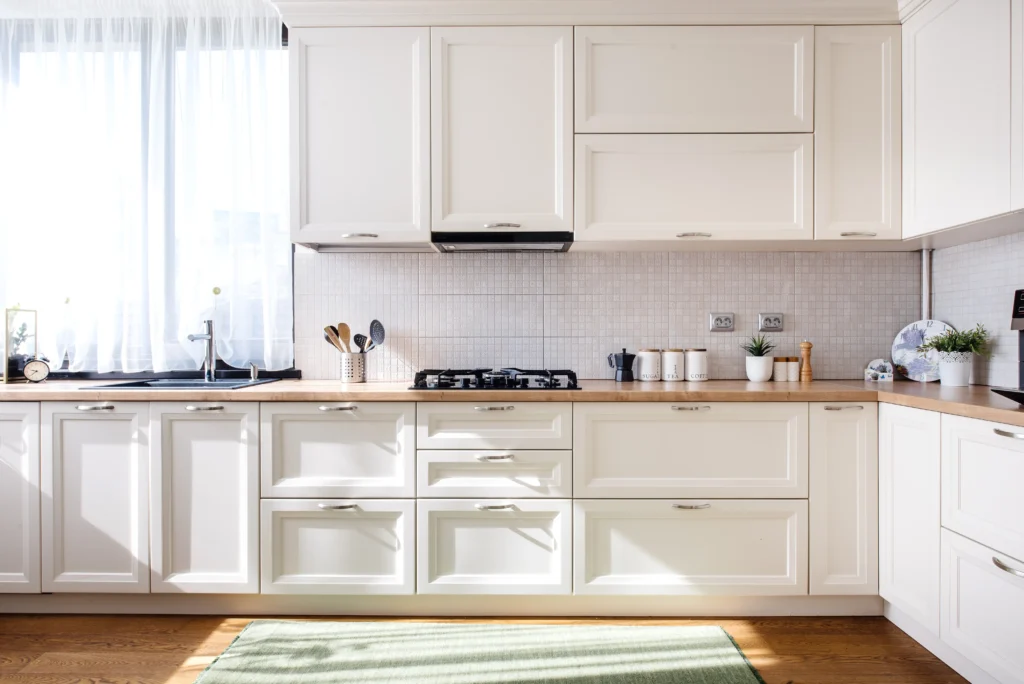
Step 6: Apply the paint carefully
Use a high-quality synthetic brush or foam roller for a smooth application. A sprayer offers the most professional look if you have the tools and experience to use one properly. Apply thin coats rather than one thick layer to avoid drips and uneven texture. Let each coat dry completely before applying the next, typically waiting 6–8 hours depending on the paint type and humidity level. Two coats of paint usually provide full coverage, though darker colors may require an additional coat for depth and richness. Between coats, inspect the surface for imperfections. If you notice small bumps or dust particles, lightly smooth them with a fine-grit sanding sponge. This minor touch-up doesn’t count as full sanding, it’s simply refinement to maintain a flawless finish.
Step 7: Allow proper curing time
Even after paint feels dry, it still needs time to cure. Curing allows the paint to harden completely, forming a durable shell that resists chipping and scratches. Depending on the product, this process can take up to 30 days. During this period, avoid heavy use, harsh cleaners, or placing items directly against the surface. The patience pays off with a professional, long-lasting finish that rivals brand-new cabinetry.
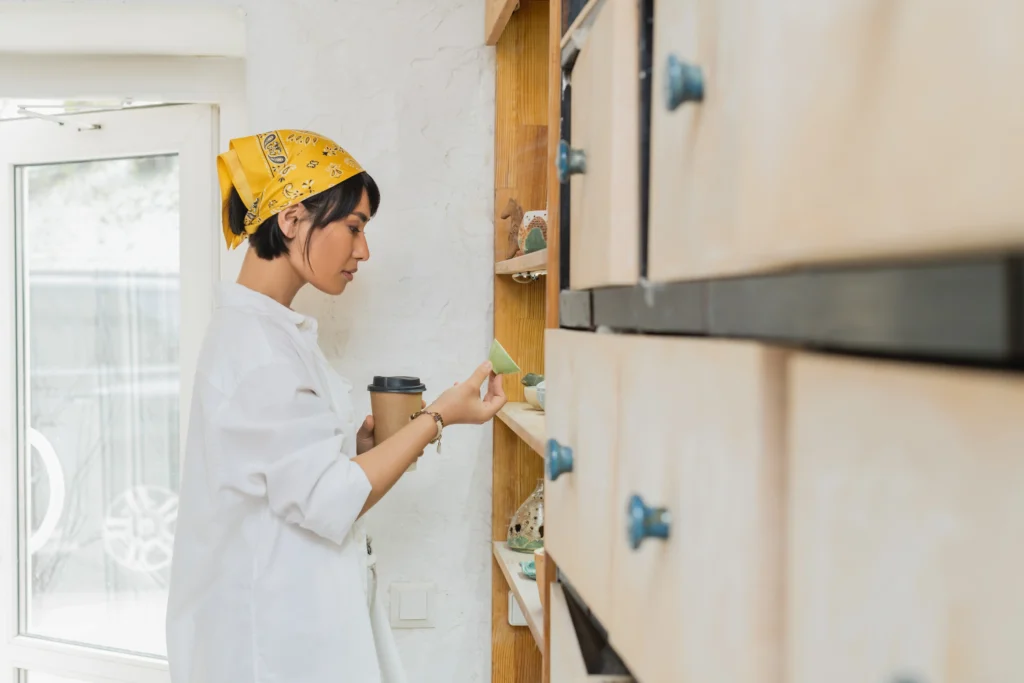
Step 8: Reassemble your cabinets
Once the paint is fully cured, reinstall your cabinet doors, drawers, and hardware. If you want to give your kitchen an updated look, consider replacing old handles or knobs with new ones. Make sure to align everything properly for smooth operation and even spacing. Reassembled correctly, your newly painted cabinets will instantly elevate the look of your kitchen. To see how professionals handle refinishing projects with precision, explore the Cabinet Painting Services page, where experts share techniques that produce flawless, long-lasting results.
Step 9: Maintain your cabinets properly
Even with professional-quality paint, proper maintenance ensures your cabinets stay beautiful. Clean them periodically with a mild soap and water solution, avoiding abrasive cleaners or pads. Wipe spills immediately to prevent moisture from softening the finish. With gentle care, your painted cabinets will continue to look pristine for many years without needing refinishing.
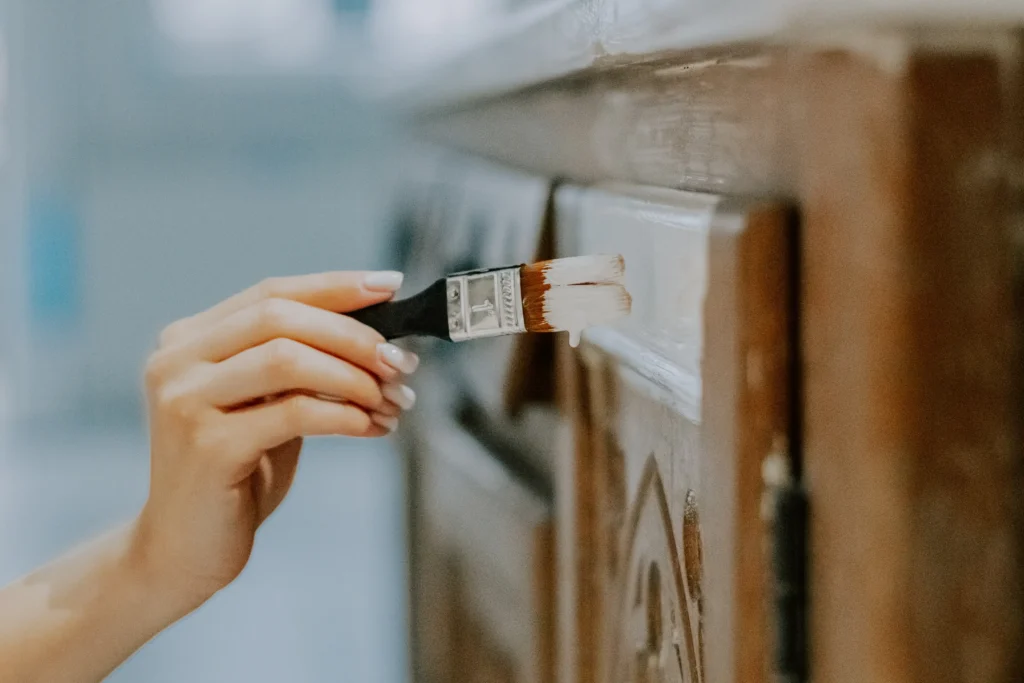
Advantages of skipping sanding
Painting kitchen cabinets without sanding saves time and reduces mess, but it also protects the integrity of the wood by minimizing abrasion. The process is faster, quieter, and cleaner while still providing excellent adhesion and durability when done correctly. For homeowners updating their kitchens on a tight schedule, this method offers professional-quality results in less time.
When to consider light sanding
While sanding can often be skipped, some situations still benefit from light surface scuffing. Cabinets with flaking paint, deep scratches, or heavy varnish layers may require limited sanding to ensure even adhesion. Lightly buffing these areas helps primer bond smoothly without the need for full sanding. Professional painters use this targeted approach to blend old and new finishes seamlessly.
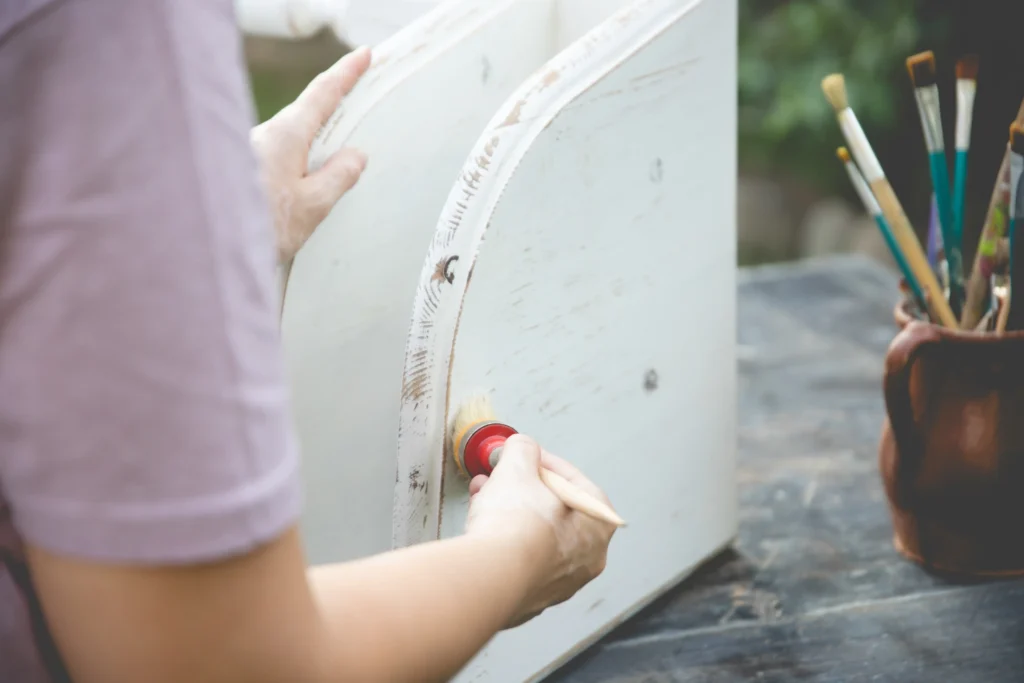
Conclusion
Learning how to paint kitchen cabinets without sanding is all about preparation and product selection. By cleaning thoroughly, applying a deglosser, and using a bonding primer followed by high-quality paint, you can achieve a smooth, professional finish that lasts. This modern approach eliminates the mess of sanding while maintaining beauty and durability. For expert cabinet refinishing that delivers flawless results, contact Four Seasons Painting Co.. Their team uses proven techniques and premium materials to give your kitchen a refreshed, long-lasting transformation without the hassle of sanding.

